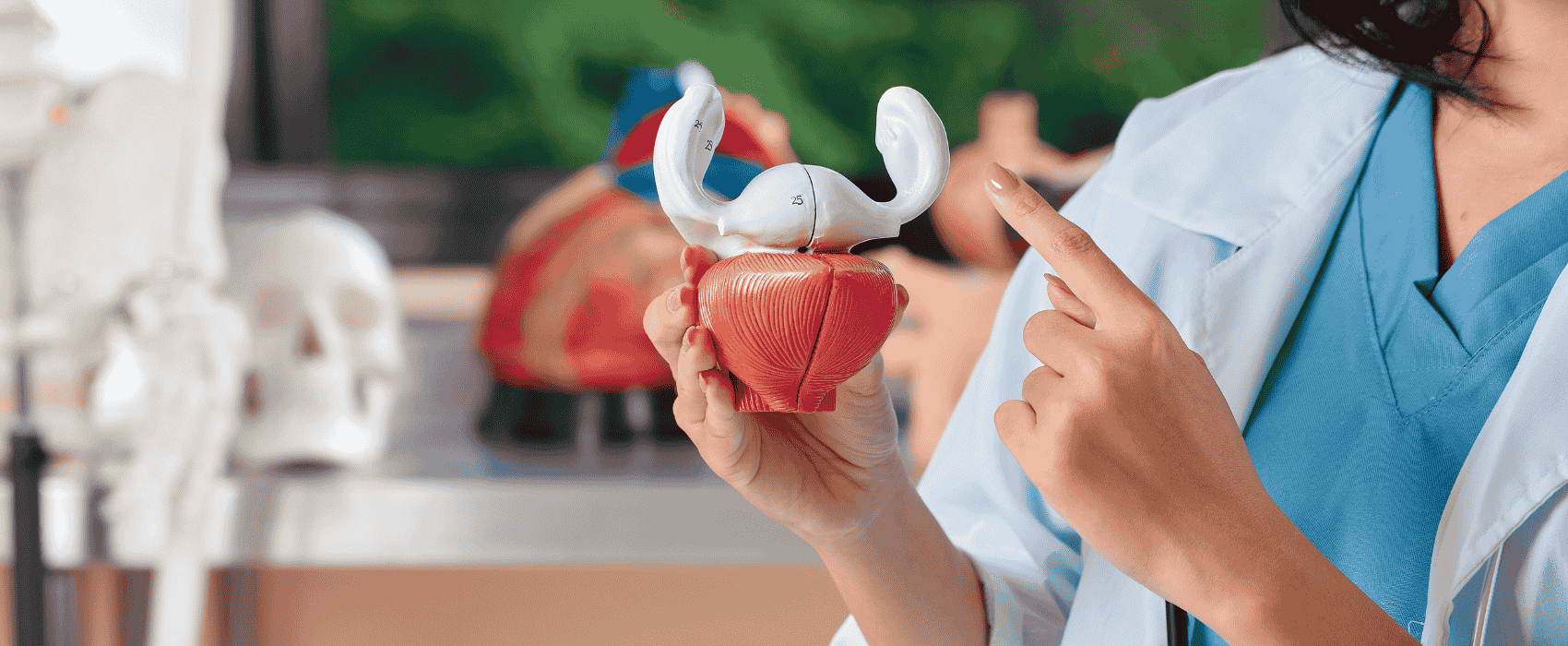
Testicular cancer is a type of cancer that originates in either one or both of the testicles (testis). It’s a fairly rare type of cancer and can be easily treated once diagnosed—when found early.3 While testicular cancer can technically occur at any age, it’s most commonly found in men between the ages of 15 and 44.3 Since the success of treatment relies on catching testicular cancer early, it’s important to perform self-exams and see your doctor regularly. If you notice any symptoms of testicular cancer, including feeling a lump, don’t hesitate to contact your doctor. Symptoms can present themselves differently from person to person and it’s always better to be safe when screening for cancer.
To make sure that you’re informed and understand how to catch testicular cancer early, it’s important to know what to watch out for including the common signs of testicular cancer and when to see a doctor and how to perform a testicular self-exam. If you do find a lump and your doctor diagnoses you with testicular cancer, try to remain calm. There are a lot of options moving forward and if found early, testicular cancer can be cured.3 In this article, we’ll discuss what you should know after a testicular cancer diagnosis.
How to Diagnose Testicular Cancer
Testicular cancer can be diagnosed using a number of different tests. In most cases, men will discover a lump in either one or both of their testicles, which prompts a doctor’s visit. In instances where men don’t perform self-exams regularly, your doctor might be the one to find the lump. When this happens, one or more tests are needed to confirm the diagnoses.
Ultrasound
An ultrasound uses a variety of sound waves to create an image of the scrotum and testicles.1 This is often the test that’s performed first after a lump has been found. Ultrasounds have the ability to show your doctor whether the lump is something benign like a hydrocele or varicocele, or more dangerous like a solid tumor.2
Blood Tests
If the lump is solid, your doctor will likely move on and administer a blood test to look for tumor markers. If you have testicular cancer, your blood will likely have high levels of certain proteins like alpha-fetoprotein (AFP) and human chorionic gonadotropin (HCG), which often indicate the presence of a tumor.2 These blood markers can also give your doctor insight as to what kind of testicular cancer it is, making treatment plans more specific with a higher chance of eradicating the disease.
Biopsy
If all else fails, a biopsy will be done to confirm the testicular cancer. Biopsies are the last resort for diagnosing testicular cancer as they raise the risk of spreading the cancer.2 This is usually only done in cases where the diagnosis is uncertain and needs to be confirmed.2
Understanding Your Diagnosis
After receiving a confirmed diagnosis, you’ll be given information on the specific type of testicular cancer. There are two types of testicular cancers that men get—seminoma and nonseminoma.
Seminoma
Seminoma testicular cancers can occur regardless of age. Seminoma tumors are often less aggressive and tend to grow slowly, so treatment outlooks are more optimistic.1 If you’re older and are diagnosed with testicular cancer, it’s more likely to be seminoma.1 Treatment for seminoma testicular cancer is less aggressive and often incorporates a lot of active surveillance when caught in early stages.
Nonseminoma
Nonseminoma testicular cancer is more aggressive and spreads quickly throughout the body. This type of cancer is more likely to occur earlier in life, which is why it’s important to start performing self-exams right after puberty.1 There are multiple types of nonseminoma tumors, such as choriocarcinoma, embryonal carcinoma, teratoma, and yolk sac tumors.1 Usually, the best option for treatment in nonseminoma testicular cancer involves surgery, as it’s less responsive to radiation and chemotherapy than seminoma.3
Staging Testicular Cancer
After confirming the diagnosis and type of testicular cancer, your doctor will move on to staging the cancer. Staging cancer involves understanding the extent of the cancer, or how aggressively it’s spread. Staging testicular cancer can be done using a computerized tomography (CT) scan and blood tests. With a CT scan, your doctor will primarily look for signs that your cancer has spread to other parts of the body.1 The blood tests will look for different types of tumor markers and how elevated they are to see whether your cancer is still in your body after undergoing surgery to remove one or both of your testicles.1
When testicular cancer is caught and has not yet spread outside the testicles, treatment is easier, faster, and more likely to result in complete eradication of the cancer. However, just because it has spread, doesn’t mean you should lose hope. There are different treatment options for each stage of testicular cancer that can help you work towards beating it.
- Stage 0: Stage 0 is technically not an active cancerous state, but rather a warning that cancer could potentially start to grow.3 Doctors refer to this stage as Germ Cell Neoplasia In Situ (GCNIS) and it is often found in the seminal tubules only.3
- Stage I (IA, IB, IS): Stage I testicular cancer is when the cancer is isolated in the testicles only and has not yet spread to the lymph nodes.3
- Stage II (IIA, IIB, IIC): Stage II testicular cancer is when the cancer has spread to one or more lymph nodes in the abdomen but has not yet spread to other parts of the body.3
- Stage III (IIA, IIB, IIC): Stage III testicular cancer is when the cancer has spread past the lymph nodes in the abdomen and well into the body.3 In this stage, cancer could be detected anywhere, and your blood tests will indicate high levels of tumor markers.
Staging testicular cancer can be a very in-depth process and there are a lot of details that go into it. If you’re interested in learning more about the staging process, including information about tumor markings, nodes, metastasis, and more, this is a very helpful article.
Moving Forward with Treatment
Once determining the type of testicular cancer and its severity, it’s time to move forward with a treatment plan. As we mentioned, early stages of testicular cancer respond well to treatment and have high rates of success in eradication. The treatment depends to your specific case, so always talk to your doctor about any questions and follow their treatment plan.
Surveillance
If the cancer is in Stage 0 or Stage I, your doctor will likely recommend simple surveillance to start. Surveillance involves keeping an eye on the cancer to see if there are any changes between your checkups.3 In some cases, your body could fight off the cancer on its own. In cases where changes occur, then more treatment options will be recommended.
Surgery
For all stages of testicular cancer, surgery is often the most popular option. The type of surgery depends on the severity of your cancer, but an orchiectomy is the most common one.3 This removes the entire testicle and mass through a small incision in the groin.3 Other surgical options include testis-sparing surgery (TSS) and retroperitoneal lymph node dissection (RPLND).3
Radiation Therapy
Radiation is used in seminoma-cell cancers as it responds better than nonseminoma. Radiation works to kill cancer cells on the testis or in any nearby lymph nodes.3
Chemotherapy
Chemotherapy is the most common treatment option for cancer that has spread beyond the testicles and into the body.3 Oftentimes, chemo will be given after a surgery if your tumor markers are still high.3 Chemotherapy causes some difficult side effects, but can help eradicate cancer cells that have spread throughout your body.
Finding Support and Dealing with the News
Receiving a testicular cancer diagnosis is difficult and everyone reacts differently. Regardless of your outcome, it’s important to find support and come to terms with your diagnosis in a way that helps you manage your emotions. During this time, even though it’s hard, it’s important to take care of yourself and continue to make healthy choices in your daily life.1 Some men find relief in learning everything they can about testicular cancer while others benefit from joining support groups. Regardless, staying connected with your loved ones will help you manage your diagnosis and maintain a positive outlook, which is extremely beneficial to overcoming cancer.
Conclusion
If you’ve been diagnosed with testicular cancer, try to remain calm and have a positive outlook. There are a lot of treatment options that can help you get back to being cancer-free. During the process, regardless of the outcome, find a support group and don’t be afraid to ask your urologist any questions or discuss any concerns. If you haven’t been diagnosed with testicular cancer, but notice any signs or symptoms that cause alarm, call your doctor immediately. If you need any urological supplies or additional educational resources, visit our educational support page or our product selection guide. Our teams of knowledgeable urological customer service specialists are here to help.
Sources:
2 https://www.cancer.org/cancer/testicular-cancer/detection-diagnosis-staging/how-diagnosed.html
3 https://www.urologyhealth.org/urologic-conditions/testicular-cancer




